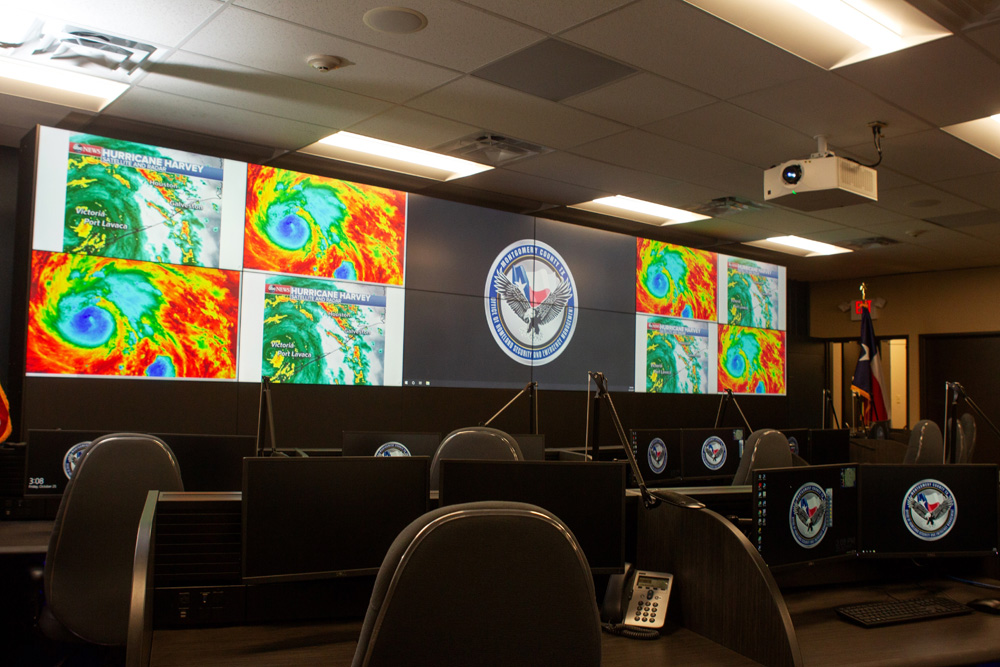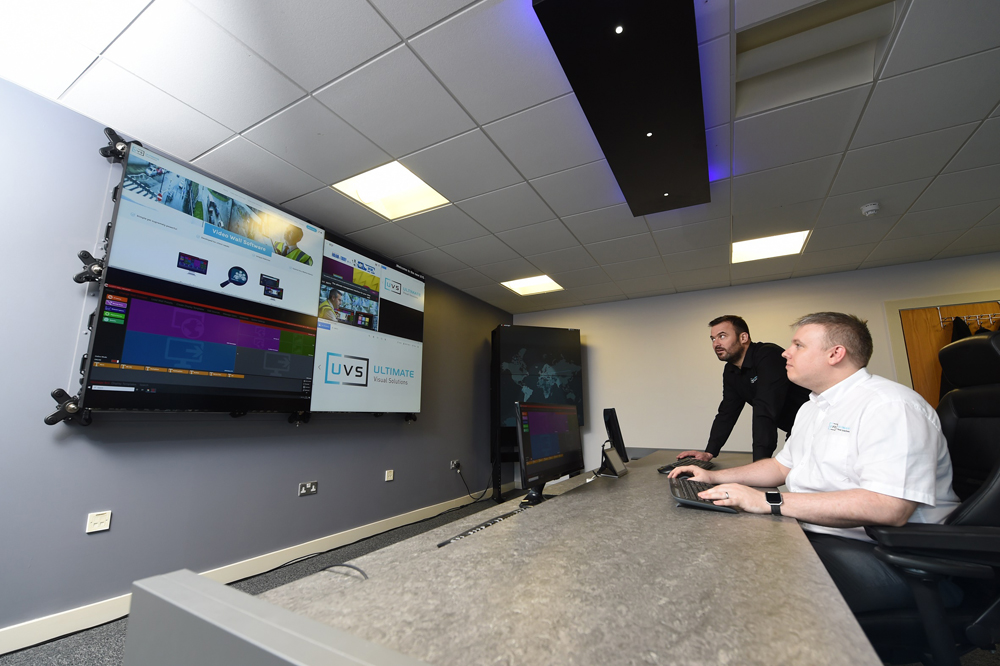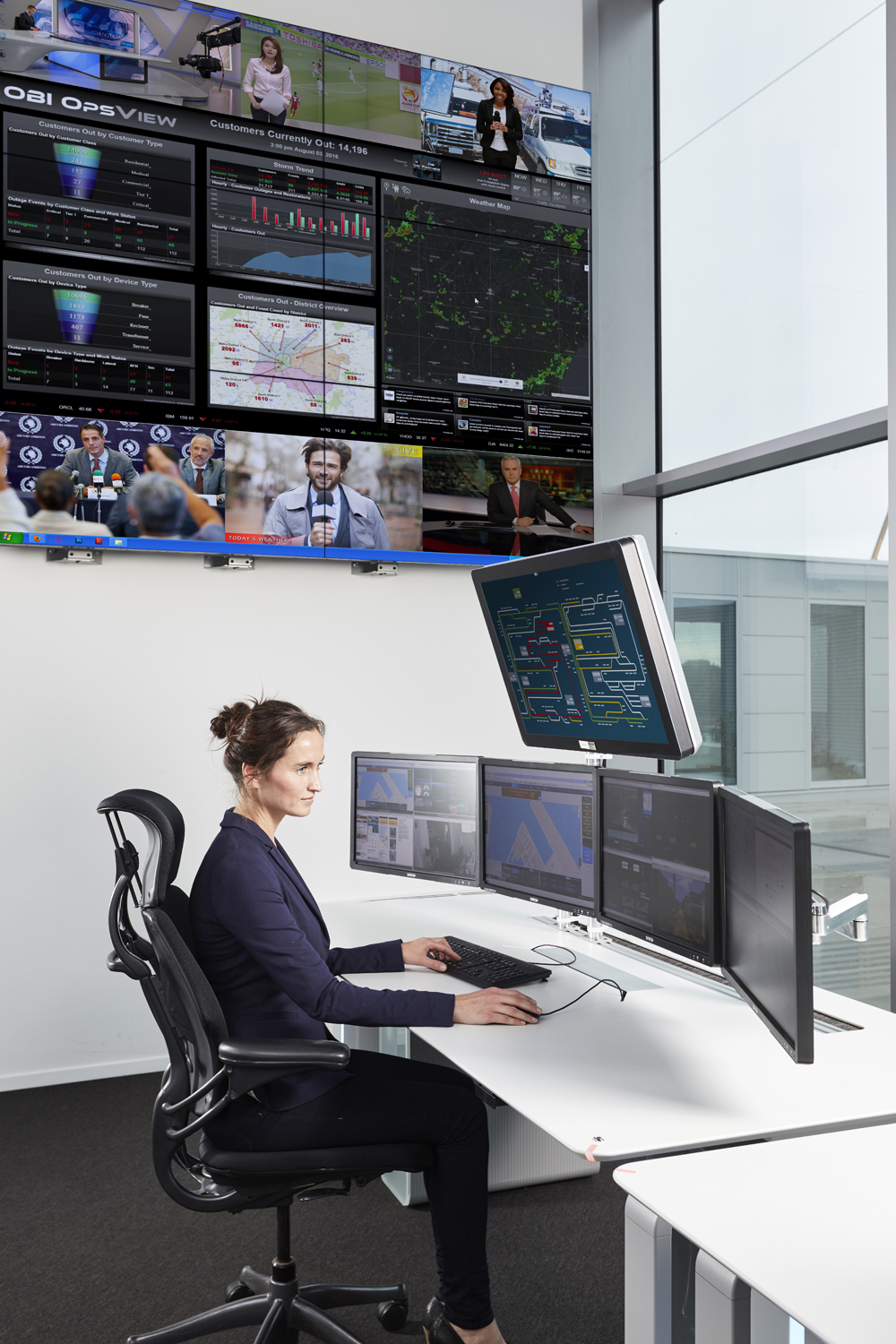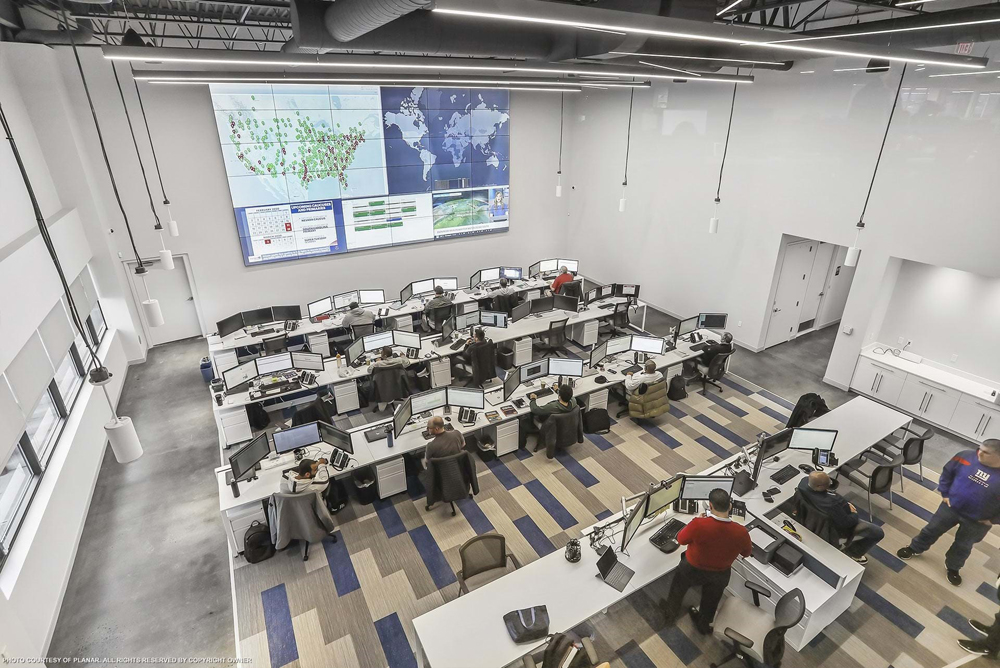
The global move to mass home working has been one of the most obvious effects of the coronavirus pandemic. For parts of the ITS sector which traditionally rely on personal contact with customers and potential clients – such as the control room technology sector – this is obviously a problem.
But there are signs that companies are getting to grips with the ‘new normal’. Ultimate Visual Solutions (UVS), for instance, has launched a suite of remote-access and online demonstration services, based out of its new HQ in Burnley, UK, to help clients during the coronavirus outbreak.
The idea is to provide “peace of mind and support for key operational video wall technology”, the company says. In the first fortnight of the new service, it completed 14 online demos to system integrators - in some cases with their potential end clients in attendance.

“With severely restricted access to sites and even mission-critical locations, it is vital that we offer remote solutions to help customers operate as near to normality as possible and to showcase our products,” UVS managing director Steve Murphy told ITS International.
“At the end of one of the recent demos I asked the customer if he felt it had been of real benefit and he was absolutely convinced that it had shown him the true functionality of the technology and given him a very good understanding of the individual components that make up the system and how it all comes together. He said it had also highlighted the simplicity of controlling the video wall from the software.”
Business continuity
UVS engineers use encrypted remote connection software – over which the client has control - to carry out maintenance. For sites where the video wall controller does not normally have an internet connection, the firm is offering to supply a 4G data dongle as part of the contract (managed and paid for by UVS) to allow clients to give internet access as required.
Meanwhile, to support control room end users who are unable to travel to work, Barco is offering a free 90-day access to its SecureStream software. “[This] allows control room employees to securely view their operational sources from any internet-connected device while maintaining social distancing safely from their homes,” explains Suchit Rout, Barco’s global strategic marketing director.
Sign-ups are available on the Barco website and a 24/7 helpdesk support service - normally available only for systems covered with a FullCare contract - is supporting all Barco control room systems covered by any service contract, again for 90 days.
Jon Litt, senior manager, business development, government solutions (US) at Christie, says that his company’s focus is on the health and well-being of employees and their families, and the needs of partners, customers and communities.
“We are monitoring and taking direction from the World Health Organisation, governments, and public health agencies as it relates to Christie’s continuing operations,” he continues. “Since Christie’s business supports essential sectors of infrastructure including emergency management, first responders, law enforcement and the military, which are on the front lines fighting the Covid-19 pandemic, we continue to manufacture products to meet the most pressing needs.”

Like other players in the sector, Leyard Group has found that the biggest negative impact on operations is in shipping – since some customers have closed their offices – and on its installation team. “Almost all physical installations have been postponed,” says Cris Tanghe, VP sales Europe.
This has been turned into an opportunity, however. “Their freed-up time is now spent with updating their skillset through additional online training sessions,” he adds. “These sessions we are also offering free of charge to any of our partners.”
Changing market demands have also prompted Leyard to introduce a leasing offering. “With this new service we can address a wider range of customers by giving them quick access to the technology they need without having to purchase it outright,” Tanghe points out.
Continuity is a key concern. The company’s Slovak LED manufacturing plant is still operational, “our in-country sales teams are still replying, be it from home office, to our customers’ requests and we have our helpdesk staffed”, he continues.
Positive opportunity
There is a light at the end of the tunnel, of course. Although the Covid-19 pandemic has created significant, forced changes in the way that we all do business, some aspects of it may not be negative. There may even be an opportunity for things to be done better when things return to ‘normal’, however that may look.
“Currently, we see a rise in demand of specific detecting and counting features within CCTV and traffic monitoring solutions to control the lockdown and travel restrictions in public spaces,” Tanghe says. “The pandemic will for sure also have in the long run an impact on our general behaviour and interaction with each other.”
It might even give new opportunities to network solution providers and telecom operators as tele-working could become the ‘new normal’, he suggests. Their network operations centres “are now even more vital than before in order to maintain business operations”.
And he identifies another possibility: “There is also a new trend arising which is the push to buy locally, so to purchase solutions in country/region to support the local economies and manufacturers to overcome these difficult times. This trend could have the potential to stay after we go ‘back to normal’.”
Steve Murphy at UVS says the company is already seeing in current transport control room installations the need to make data that is available for display on video walls in one location available to share with other associated locations. “We are already providing this functionality and believe there will be an increased demand for this post Covid-19 period, to facilitate more remote working and monitoring during any future pandemics or similar crises,” he says.
“We have also seen a huge increase in the amount of online demonstrations of our video wall technology. The clients have agreed it provides a very powerful evaluation of the benefits it provides and we believe this will be requested more in the future, when clients are making their initial evaluations, to reduce the investment required in time and travel costs. In fact, we believe it will become the norm.”
Future preparedness
Barco can also see new markets opening up. “The notion of a cloud-connected control room will gain exponential acceptance – clearly Barco is proving that the benefits outweigh the risks, especially in times of emergencies such as at present,” Suchit Rout says.
Indeed, Barco is willing to bet on this so much that it has accelerated launch of its WallConnect Cloud software that allows Barco-certified system integrators to maintain, diagnose and manage their respective installed base of Barco video walls over a secured-cloud connection for remote asset management.

“Inter-agency collaboration will accelerate further, becoming a standard workflow in critical decision-making across departmental control rooms,” Rout insists. He believes this will be achieved by “industrial-grade fit-for-purpose software”, citing Barco CMS and Barco OpSpace.
“Emergency operations centres will be in prime focus to better prepare ourselves for the future,” he continues. “Certain industry verticals, such a healthcare, government and corporates are expected to increase investments towards centralised or distributed operations centres to mitigate future risks.”
Looking ahead, Christie’s Jon Litt believes the emphasis will continue to be on quality, reliability and serviceability. “While a customer may be able to reduce initial investment using suppliers with lower-quality components and limited service capabilities, such solutions can add risks. Mission-critical environments require technology that you can trust. Customers should consider system redundancy for 24/7 operations, and video walls with telecom-grade power supplies to ensure maximum uptime,” he concludes.











